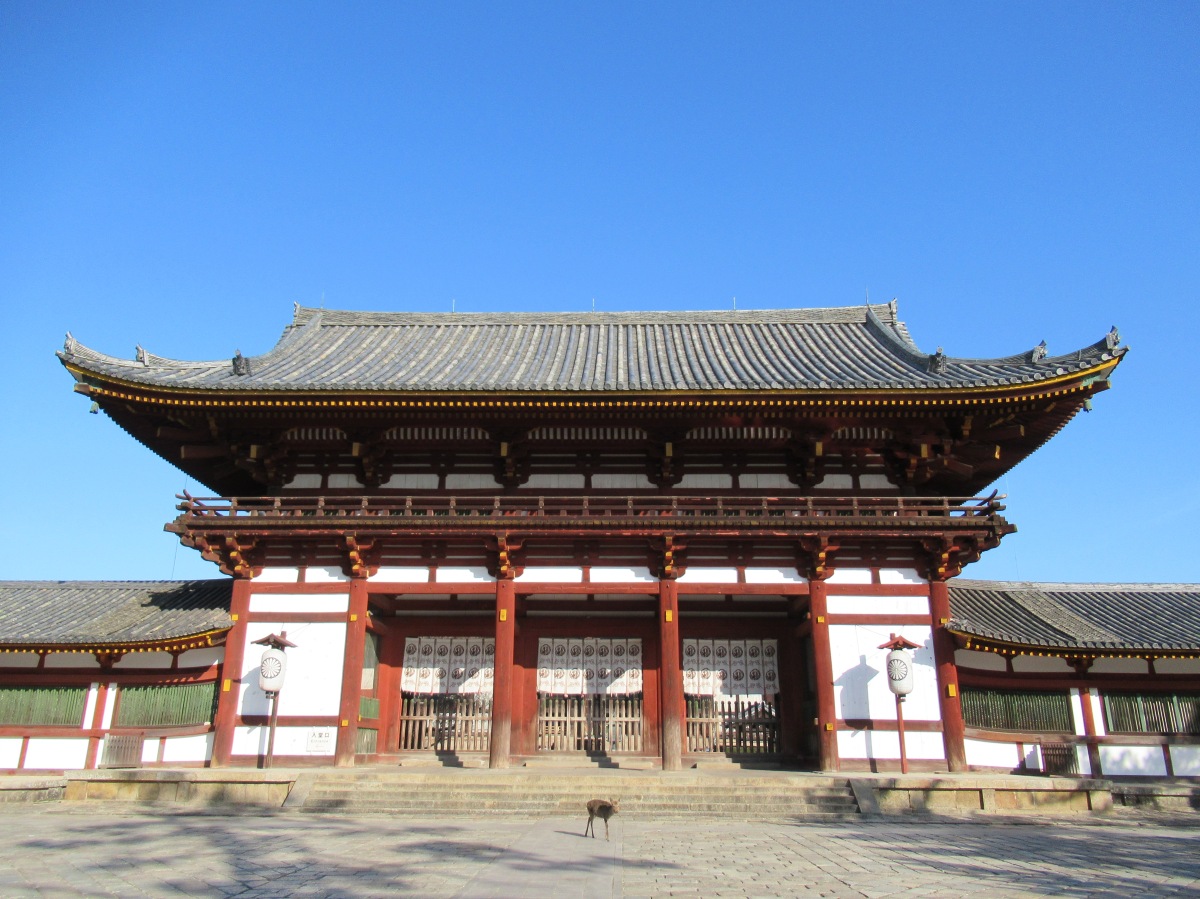Nara is a place where you get a good glimpse into Japan before its capital was moved to Kyoto in 794AD. Buddhism was the main religion and a lot of architectural styles of modern Japan arose from that era. There are Seven Great Temples in Nara, Nanto Shichi Daiji, that capture this significance. During our trip there, we visited three: Horyuji, Todaiji and Kofukuji. Places close at around 5pm so it was tough to visit all the temples within the time we were there. My advice is not to miss out on the other attractions like Nara Park and the walking streets. I wrote a longer post about our trip here.
The first temple we visited was Horyuji. It is situated south-west of central Nara and is the furthest away from the centre. You have to take the train and walk, or drive like we did. Within this site laid the oldest wooden buildings in the world. They were built sometime during the Asuka Period (538AD-710AD). It must take a good amount of expert care to preserve these structures because the entrance fee to this site was the most expensive out of all the places of interest we visited (¥1500 for adults). However, you are able to see the structures from outside the paid area and there were plenty of other things to see around so we didn’t go in.



Aside from the western precinct where the old wooden buildings were, there was an eastern precinct that had the Yumedono (hall of visions), Gallery of Temple Treasures and Chuguji Temple. Chuguji is renowned for housing a ‘Smiling Buddha’, which stands out for its unique appearance. Its smile is often compared to the Egyptian Sphinx and the Mona Lisa. The actual statue was elsewhere when we visited so we only saw pictures like the one below.



The next temple we visited was Todaiji. It is conveniently situated in Nara Park so you could just walk there from anywhere in the park. It used to be the largest wooden building in the world until 1998 which is a testament to its massive size. Its main resident is none other than a giant bronze statue of Buddha, one of the largest in Japan. There are also other smaller deities and a temple shop inside the large building. Admission here was ¥600 and its well worth to enter. There were also no deer in the complex, although plenty were just outside the gate leading in.



The last temple we visited was Kofukuji. It was a short distance from Nara Park so we walked over from there. This was the family temple of the Fujiwara Clan, the most powerful aristocratic clan during much of the Nara and Heian Periods. The main buildings in this temple complex were the three Golden Halls, the two Pagodas and the two Round Halls. The grounds of the temple were free to enter but there were admission charges for the buildings. We didn’t go inside where some of the temple’s treasures were displayed, but we could get a good all-round view of the buildings from the outside. The lack of walls also mean that deer from the nearby park were free to roam the grounds.


Of the four remaining temples, only Yakushiji and Saidaiji remain intact while Daianji and Gangoji are only partially standing. The temples are not close to each other so anyone wanting to visit them all will have to do so on separate days. Broadly speaking, they can be separated into groups, those that are in and around Nara Park (Todaiji, Kofukuji, Gangoji) and those that require transport (Horyuji, Yakushiji, Saidaiji, Daianji). You can plan such a trip in this way to make the most efficient use of your time there.


One thought on “Temples of Nara”